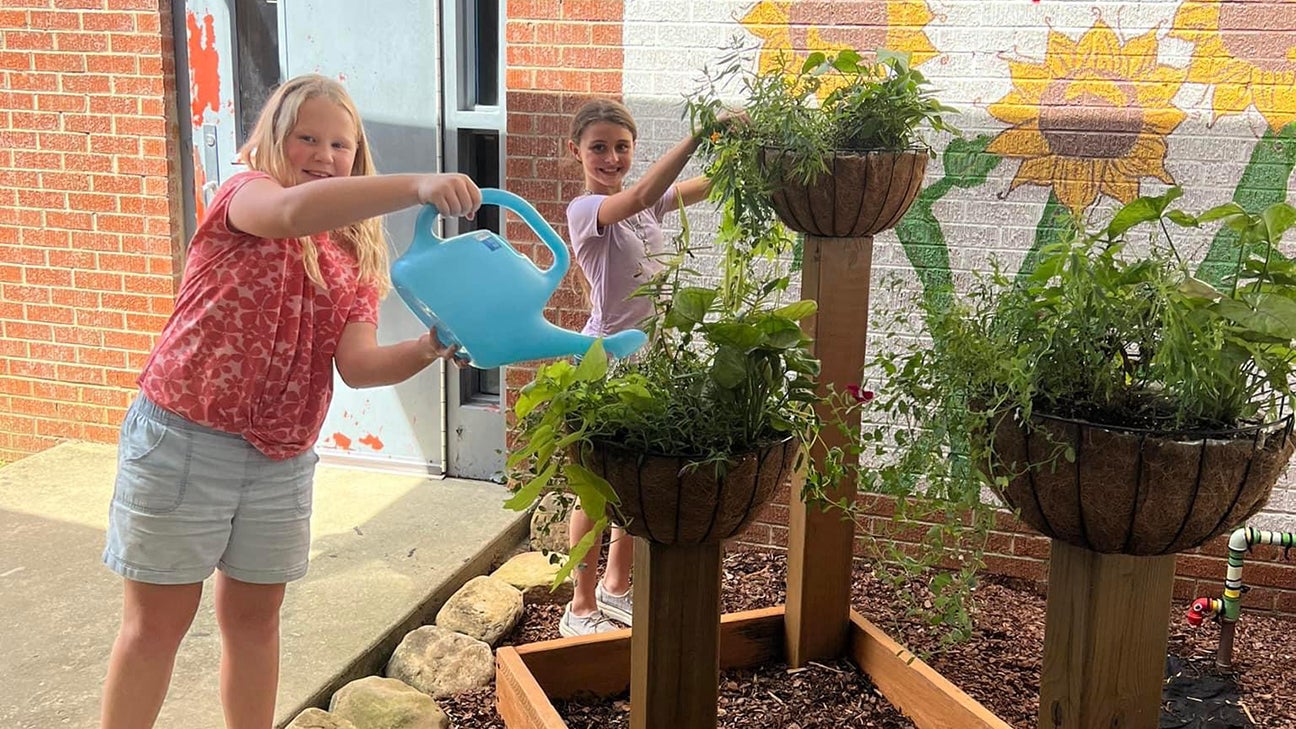Beat the heat, water stress on plants
Published 10:13 am Tuesday, August 8, 2023

- PHOTO SUBMITTED Mrs. Brittney Warren, third grade teacher at Wesson Attendance Center, recently requested assistance from the Wesson Garden Club to help in beautifying a space outside her classroom. The request resulted in the creation of a pollinator garden known as Polly’s Garden. Polly has become the mascot of the Wesson Garden Club. Mrs. Warren, also a member of the Wesson Garden Club, has been instrumental in getting the students involved in taking care of the garden. From left, Braylee Davis, “plant doctor” for the week, and Rayne McManus water and care for the plants and flowers in Polly’s Garden.
BROOKHAVEN — Dry August days, heat and the decreasing photoperiod is ushering in fall. Gardeners and hunters with food plots might notice a decrease in productivity from vegetation this time of year.
Mississippi State University Extension agent Tristan Peavey said the change is a natural process. Plants begin to senesce in the late summer as stems begin to harden and fruit production slows down. Peavey said heat and dry conditions can quicken the behavior.
Tomatoes are a great indicator of how the late summer heat and abnormally dry conditions for Lincoln County impact plant productivity. Peavey said he gets an uptick in calls from people concerned about their tomato plants this time of year.
“This time of year is tough on gardens and food plots. Heat stress does stuff to plants like it does to us. We get less productive and plants do too,” Peavey said. “Most commonly you run into issues with tomatoes. When it gets hot they get stressed and they won’t produce fruit nearly as fast. They have a 50 hour window to get pollinated but the hotter the heat the less pollen they produce.”
The low temperatures have been above 75 degrees for the last week or so and the National Weather Service forecast indicates the lows will stay there for a while. Peavey said those temperatures are hard for tomatoes to produce flowers, pollinate and ripen the fruit so tomatoes will stay green longer.
Cucumbers, green beans and many other plants will experience the same issues this time of year but it is normal. Peavey said there is not a real good remedy he could recommend.
Water stress is one issue people can help remedy though. National Weather Service in Jackson records show about 9 inches of rain have fallen since June 1. Brookhaven has yet to receive an inch of rain this August.
“It is very dry so if you water your plants a general rule is an inch of water a week is best,” Peavey said. “It is better to do a heavy soaking rather than frequent watering. You will get better absorption of water in a heavy soaking.”
People can also help keep the soil cool and hold moisture by putting down mulch. Gardeners should be careful with using hay because if there was any herbicide sprayed on the hay it could harm vegetables.
Planters can also time planting with rain. Mississippi is in a summer lull right now until the middle of September. It is impractical to try and water food plots right now but they should not have any issues if they are well established, Peavey said.
Soon it will be time to plant cool season plants and winter food plots. Peavey recommends people wait until the middle of September to time planting with rain.
“The biggest thing with planting when it is dry is that you can run into problems when you plant too early,” he said. “If we get another dry spell you could kill off your planting and you might have to come back and replant. You need consistent moisture.”
Brown top millet is one of a few things you can still plant this time of year and hunt over by mid September to October. Dove season is quickly approaching and if you planted millet today the plants may not be have a seed head by opening day but you could hunt over it.
Sept. 2 is the Dove Season opener and Sept. 1 is the Canada Goose opener. Read this article written last year to learn how you can stay legal while hunting migratory birds.
As for the fall, creek beds are starting to dry up and the leaves are starting to fall. Peavey said he has noticed the changes walking around his property.
Mississippi’s summer solstice, longest daylight of the year, was over a month ago. Wednesday’s total daylight is 14 hours and 28 minutes and the daylight will shrink two minutes by Thursday. Each day is growing shorter leading up to the winter solstice, longest night of the year. Leaves sense this change and begin to transform according to an article by the United States Forestry Service.
“The veins that carry fluids into and out of the leaf gradually close off as a layer of cells forms at the base of each leaf,” the article states. “These clogged veins trap sugars in the leaf and promote production of anthocyanin. Once this separation layer is complete and the connecting tissues are sealed off, the leaf is ready to fall.”
Fall equinox will be on September 23 and is the first day of fall.





